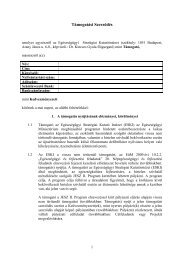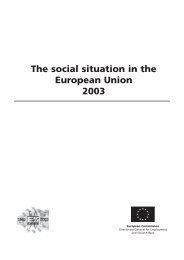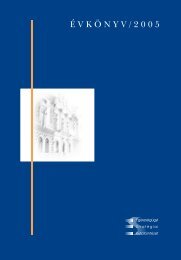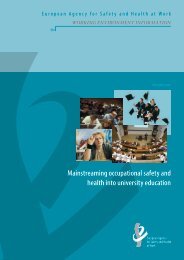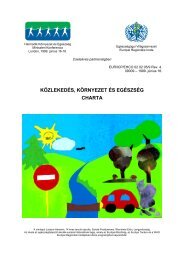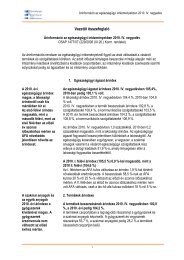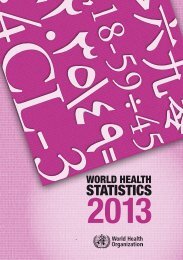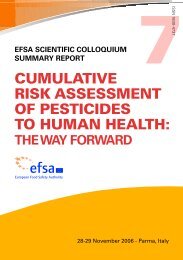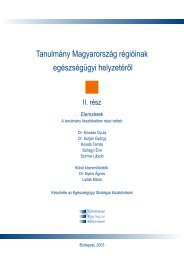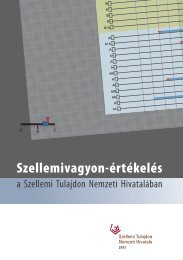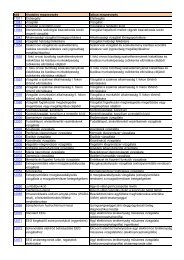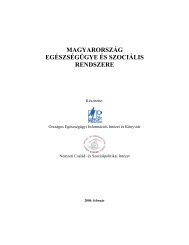WHO Technical Report Series, No. 981 - World Health Organization
WHO Technical Report Series, No. 981 - World Health Organization
WHO Technical Report Series, No. 981 - World Health Organization
You also want an ePaper? Increase the reach of your titles
YUMPU automatically turns print PDFs into web optimized ePapers that Google loves.
Annex 2<br />
■■<br />
■■<br />
■■<br />
■■<br />
■■<br />
■■<br />
■■<br />
■■<br />
complaints and recalls;<br />
significance of changes (e.g. equipment, key personnel);<br />
results of product testing;<br />
risk to the patient;<br />
complex route of synthesis (API);<br />
polymorphism (API);<br />
biopharmaceutical classification of the product;<br />
innovative or emerging technology.<br />
The number of inspectors and number of days required for the inspection,<br />
as well as the scope of the inspection, should be determined based on the risk<br />
rating of the site inspection.<br />
Inspection reports should contain findings and observations. Departures<br />
from GXP should be classified where appropriate, as “critical”, “major” or “minor”.<br />
The unit should have an SOP that describes the classification process.<br />
Classification should be based on risk assessment. The level of risk assigned<br />
should be in accordance with the nature of the observation as well as the number<br />
of occurrences.<br />
5.2.3 Corrective action and preventive action review,<br />
and scheduling of routine inspections<br />
CAPA should be requested from a site, following an inspection. The CAPAs<br />
should address the observations included in an inspection report. Based on the<br />
outcome of the inspection and the acceptability of the CAPA, the risk rating of<br />
the site should be reviewed and recorded.<br />
Inspection frequency should be defined based on the risk rating. For<br />
example, the frequency can be defined as every 6, 12, 18 or 24 months. (<strong>No</strong>te: The<br />
maximum time interval should be no more than every 36 months.)<br />
5.2.4 Complaint handling and investigation<br />
Handling and investigation of quality complaints should be done in accordance<br />
with a written SOP. The scope and depth of the investigation (including whether a<br />
desk review or on-site inspection will be done) should be based on risk assessment.<br />
5.3 Inspection of QRM at a manufacturing site<br />
<strong>No</strong>te: During inspections, inspectors should assess whether a manufacturer<br />
has appropriate skills and scientific knowledge, as well as product and process<br />
knowledge, for the QRM procedure being inspected. This is also relevant where a<br />
company has made use of contracted parties.<br />
83



